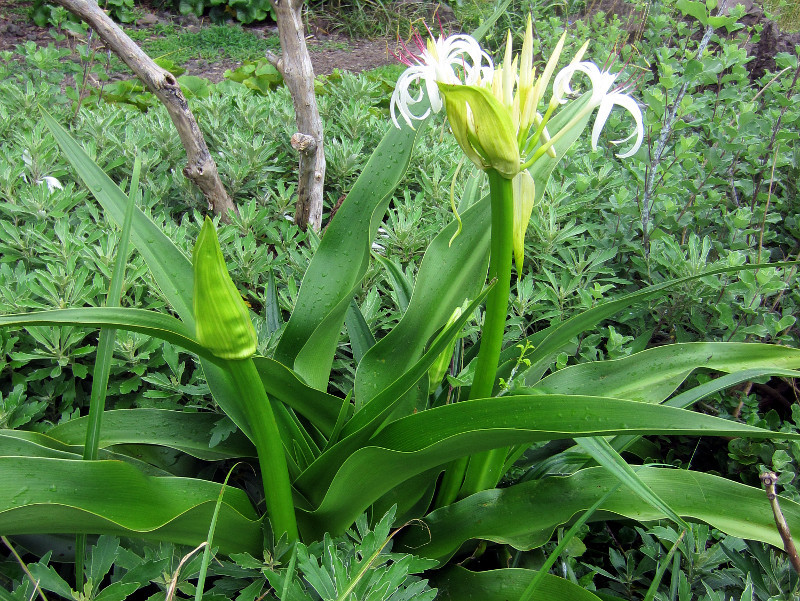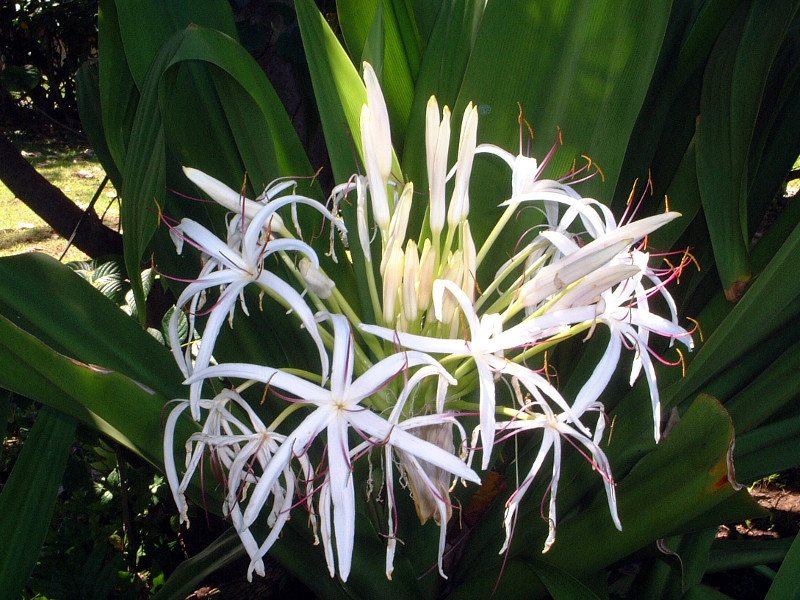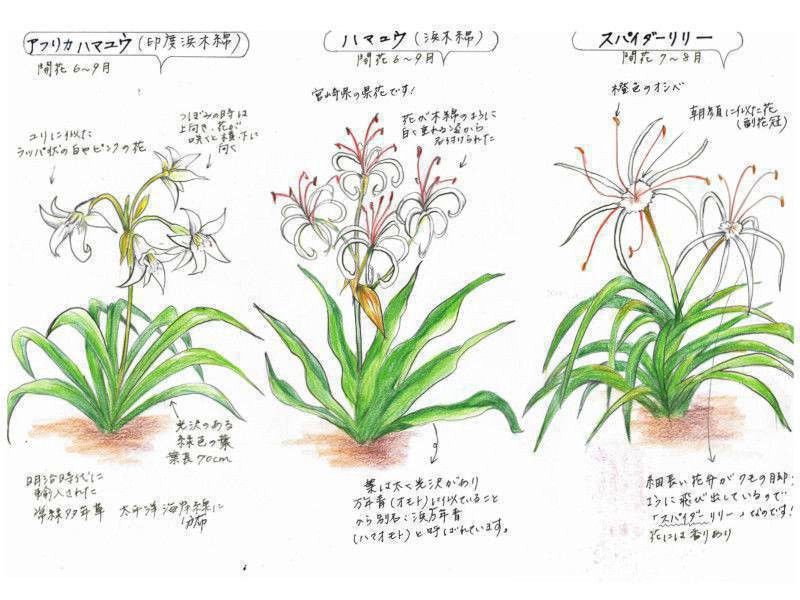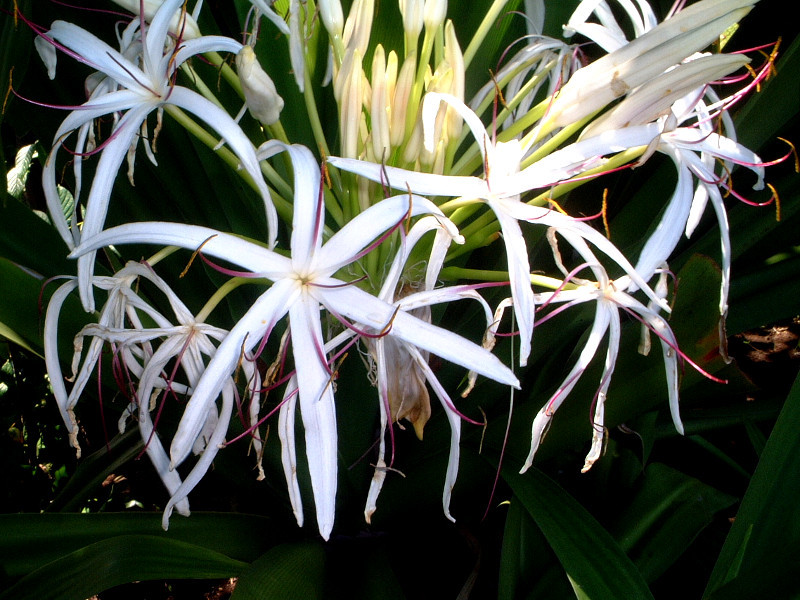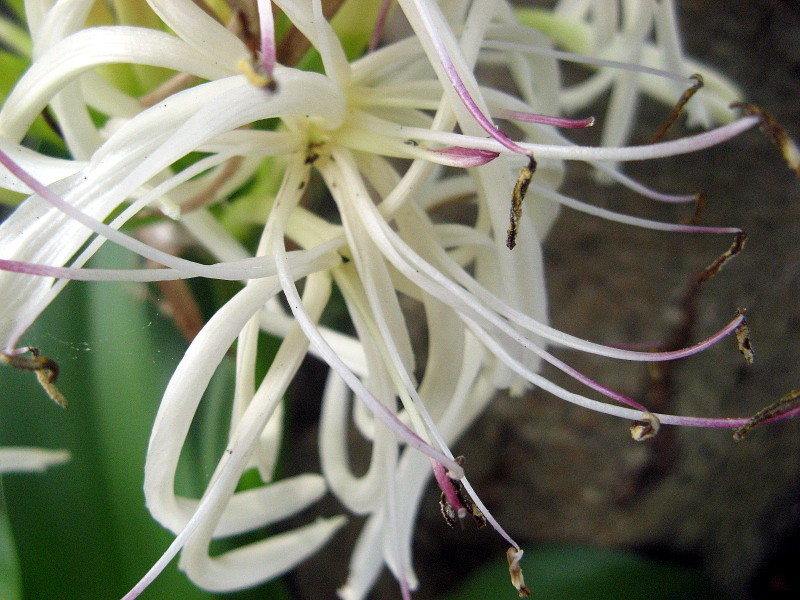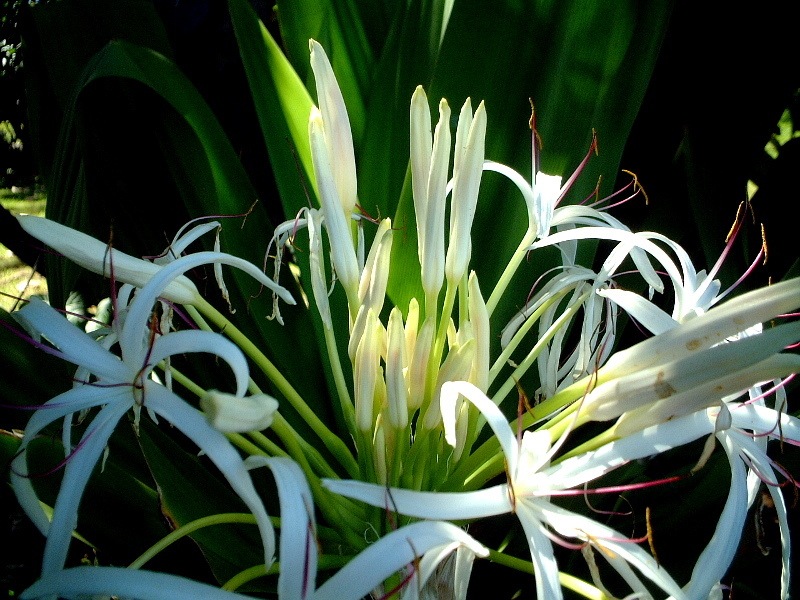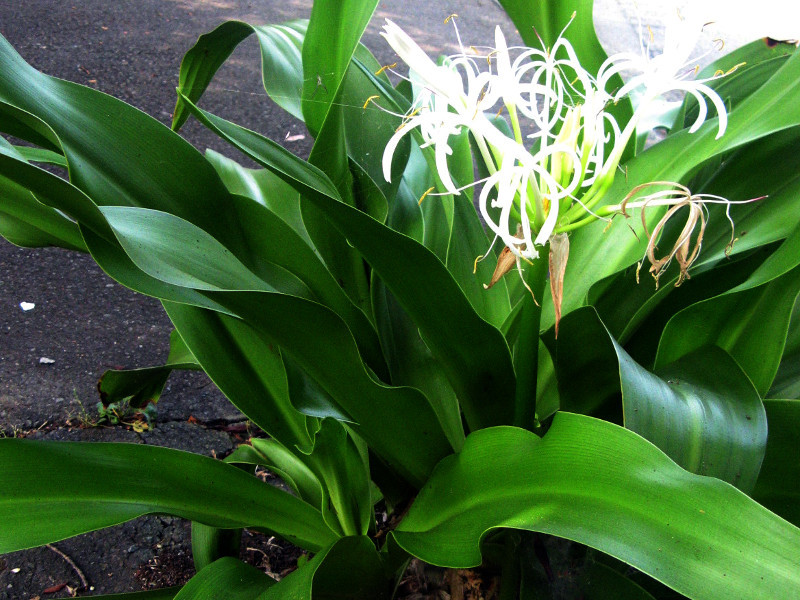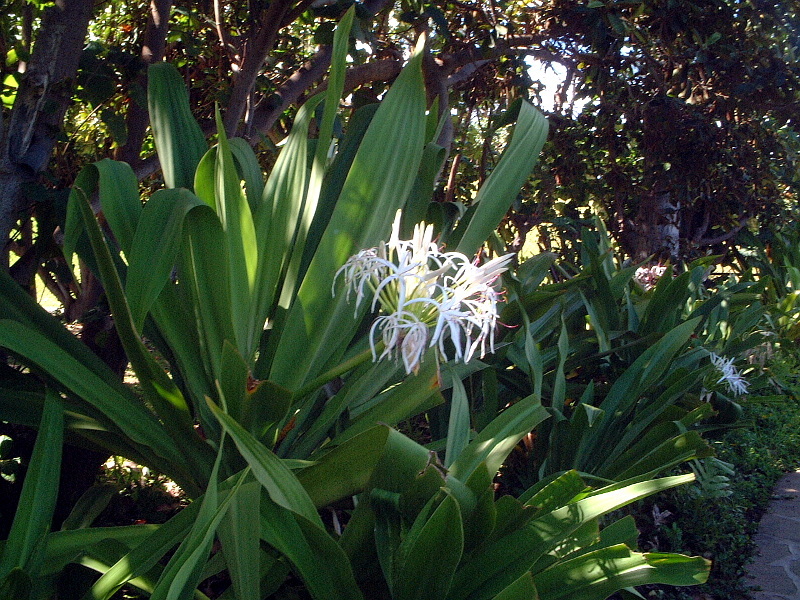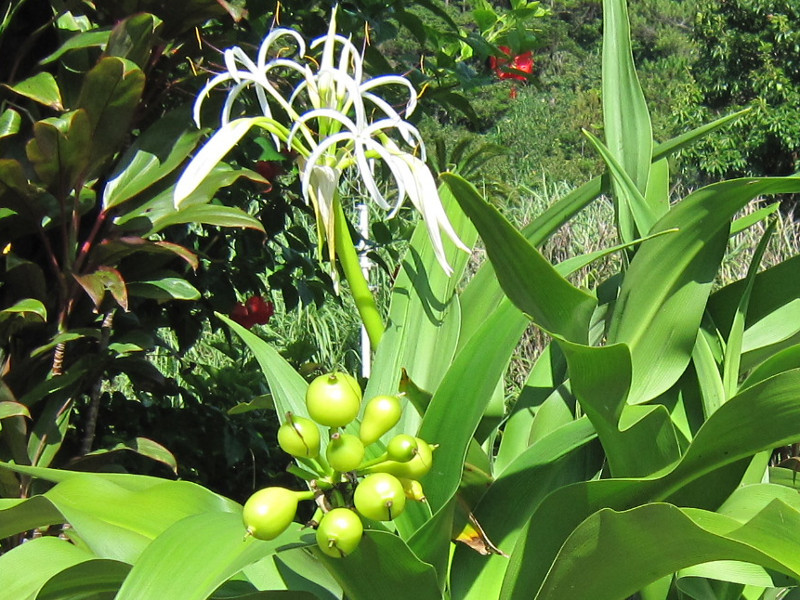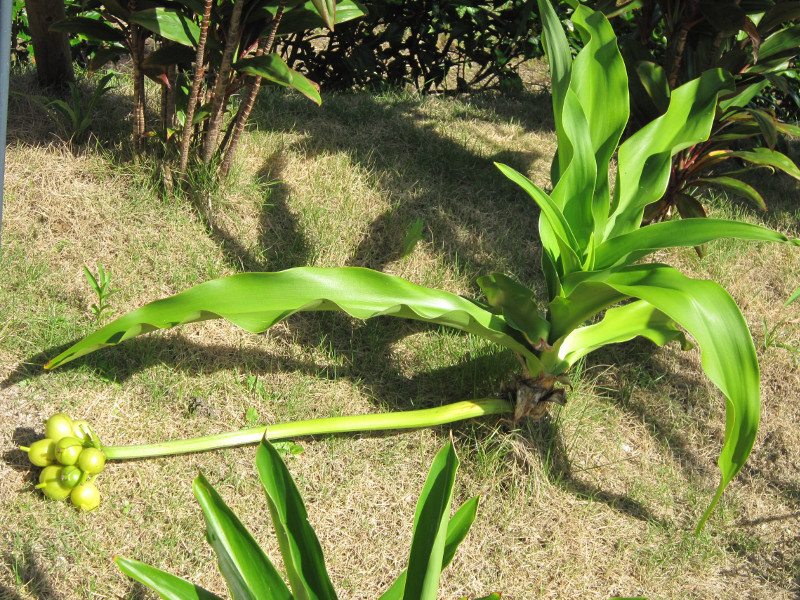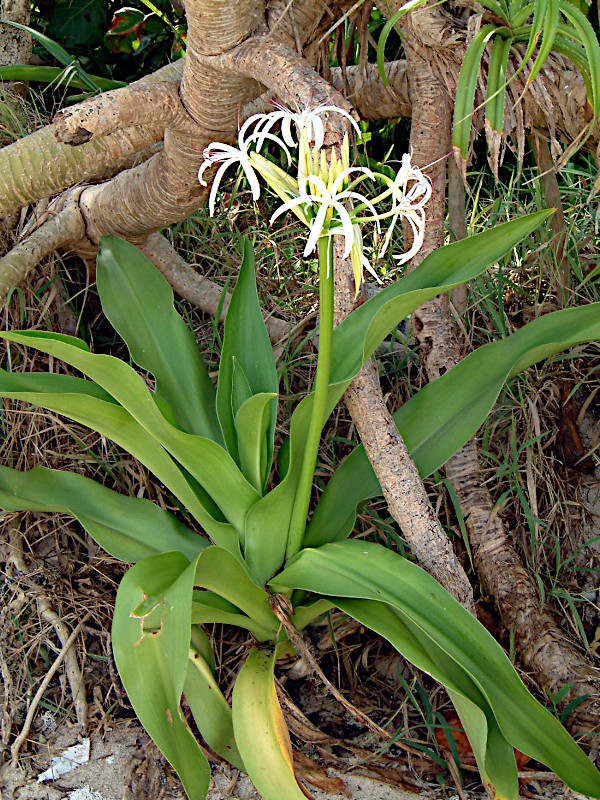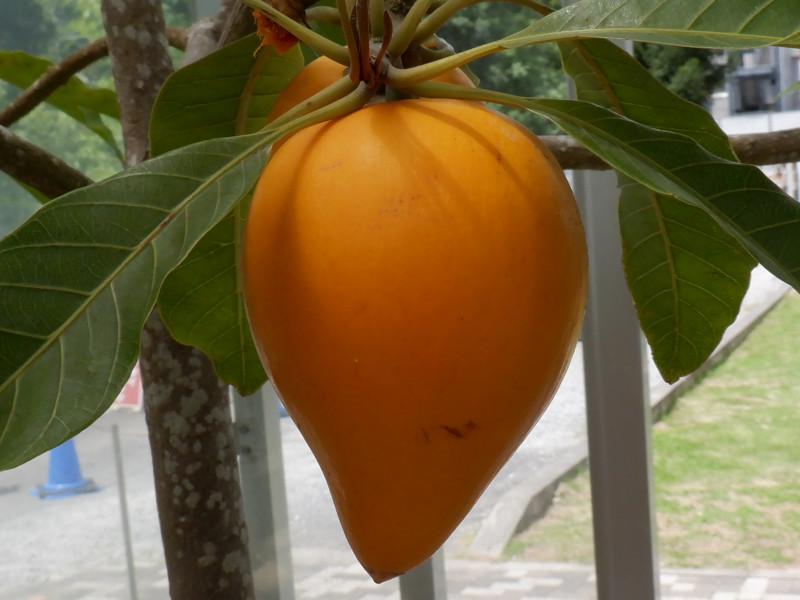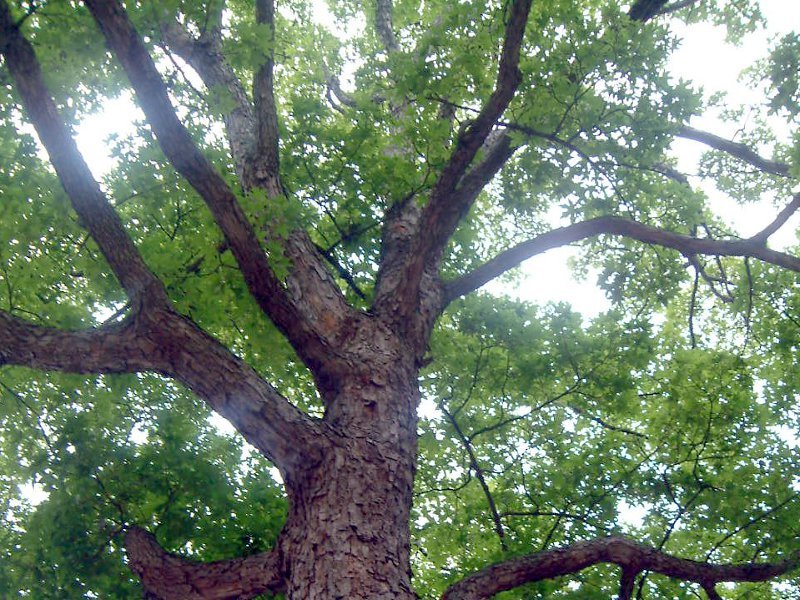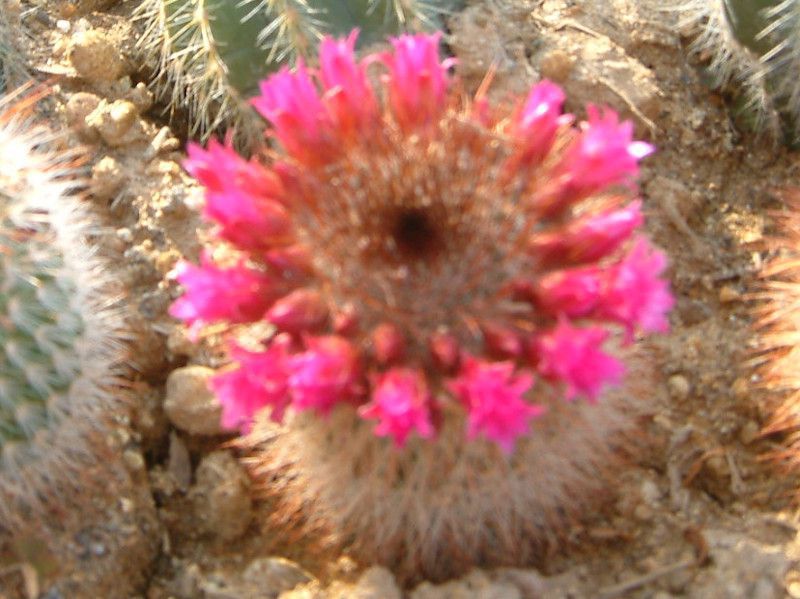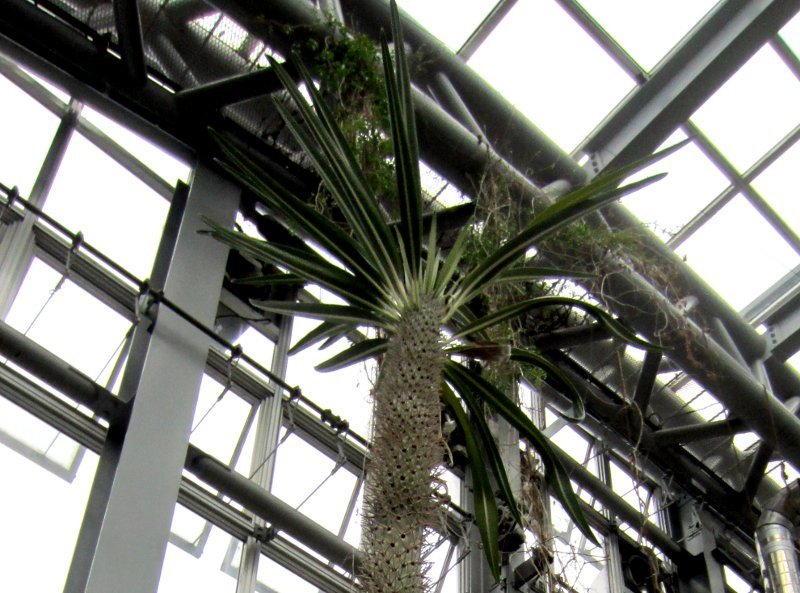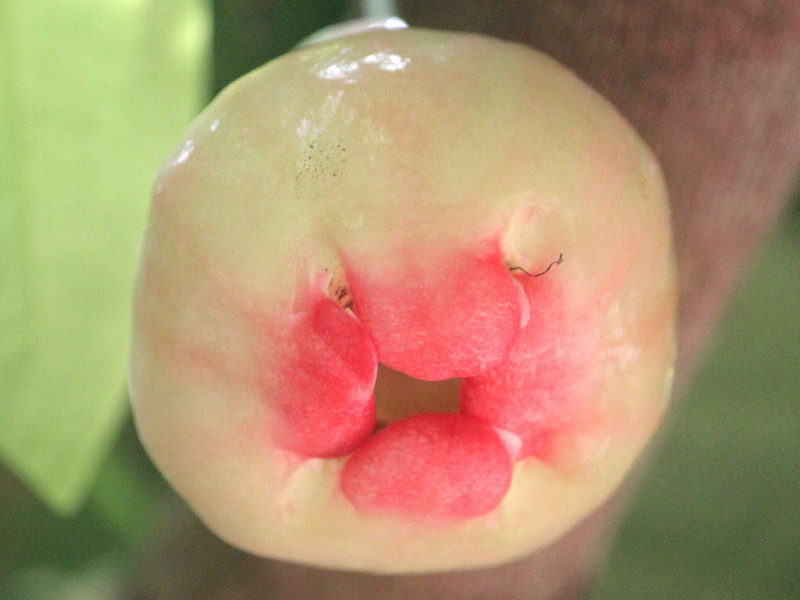Crinum asiaticum var. japonicum
- Flower nameCrinum asiaticum var. japonicum
- Scientific nameCrinum asiaticum var. japonicum
- Alias浜木綿, Crinum, クリナム, ハマオモト, 浜万年青, Poison bulb, giant crinum lily, grand crinum lily, spider lily, Hamayu, ハマユウ
- Place of originIndonesia and Sumatra
- Place of floweringSeashore
- Flowering seasonJune, July, August, September
- Language of flowersNo stains
What is Crinum asiaticum var. japonicum
Crinum asiaticum var. japonicum (scientific name : Crinum asiaticum var. japonicum) is native to Indonesia and Sumatra,and is an evergreen perennial of the family Amaryllidaceae. It likes warmer areas and can be seen on the sandy beaches of the coast and in the flower beds. A thick and shiny root root leaf is thick and long linear. From the root foliage, stretch somewhat flat and thick flower stalk (pseudostem) by 80 cm. In the evening of summer - early summer, the scattered inflorescence is extended from the tip of the flower stalk and many white flowers bloom. The florets are funnel shaped and the tips of the tips are 6-deep. Flowers are in full bloom at midnight and are fragrant flowers that attract sparrow moths with fragrance. After fertilization, spherical fruits are formed. Seeds fall from ripening deep fruits, they ride on ocean currents, drift on sand beaches, germinate, and increase descendants. Total grass poisoning, especially bulbs are the strongest, while also being medicated. The genus name "Crinum" means "crinon (lily)", species species name "asiaticum" means "asiaticum". The flower language is "There is no stain." It was imaged from flower colocomes from being used for a shrine. To similar flower, the following genus Hamae moot,r. The companion of Hamayu (genus Hamawomoto) has the followings. There are Crinum, Hamayu (beach cotton, scientific name: Crinum asiaticum), African hamayu (scientific name: Crinum bulbispermum), clinum jagus (scientific name: Crinum jagus), and there is genus Hymenocallis , Spider Lily (scientific name: Hymenocallis caribaea.
■Illustrations of Similar Crinum
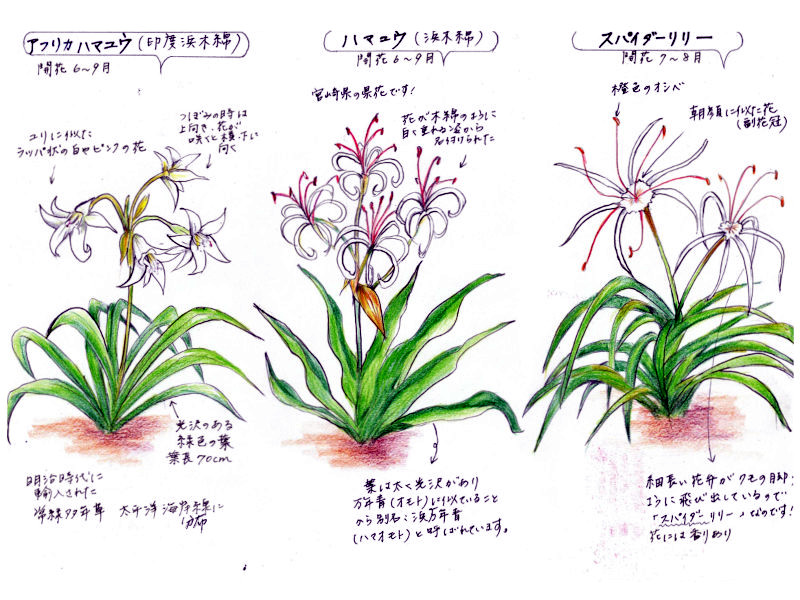
From left to right, African Crinum (Crinum bulbispermum), Hama-yuu (Crinum asiaticum), Spider Lily (Hymenocallis caribaea)
■Comparison Illustration of Crinum
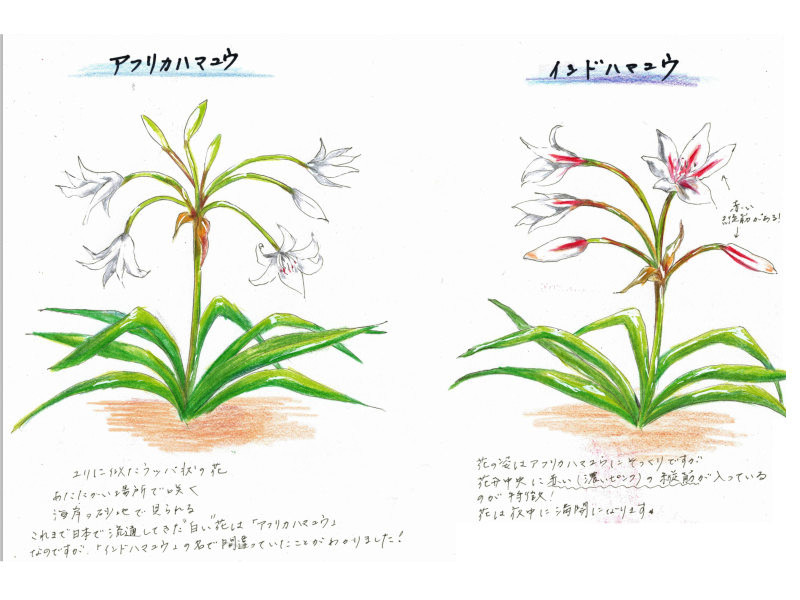
From left to right, illustrations of African Crinum (Crinum bulbispermum), Indian Crinum (Crinum latifolium).
■Similar Crinum
1) Flowers that produce white blooms, from the same family but different genera (Amaryllidaceae, Crinum genus)
●Hama-yuu (Crinum asiaticum)
●African Crinum (Crinum bulbispermum)
●Indian Crinum (Crinum latifolium)
●Crinum jagus (Crinum jagus)
2) Flowers that produce white blooms, from the same family but different genera (Amaryllidaceae, Hymenocallis genus)
●Spider Lily (Hymenocallis caribaea)
Common name: Crinum asiaticum var. japonicum, Scientific name: Crinum asiaticum var. japonicum, Origin: Indonesia and Sumatra, Distribution: coastline on the Pacific side Environment: sandy, grass length: 100 to 150 cm, leaf shape: belt-like lanceolate shape, leaf length: 70 cm, leaf width: 10 cm, leaf margin: wavy, inflorescence form: scattering inflorescence, flowering place: flower stalks, flower diameter: 6 cm, flower color: white with fragrance, flower stem length: 80 cm, petal Number: 10 to 20, Flower season: June to September, Remarks: Total herbage toxicity and medicinal plants, anti-sand, for ornamental.
